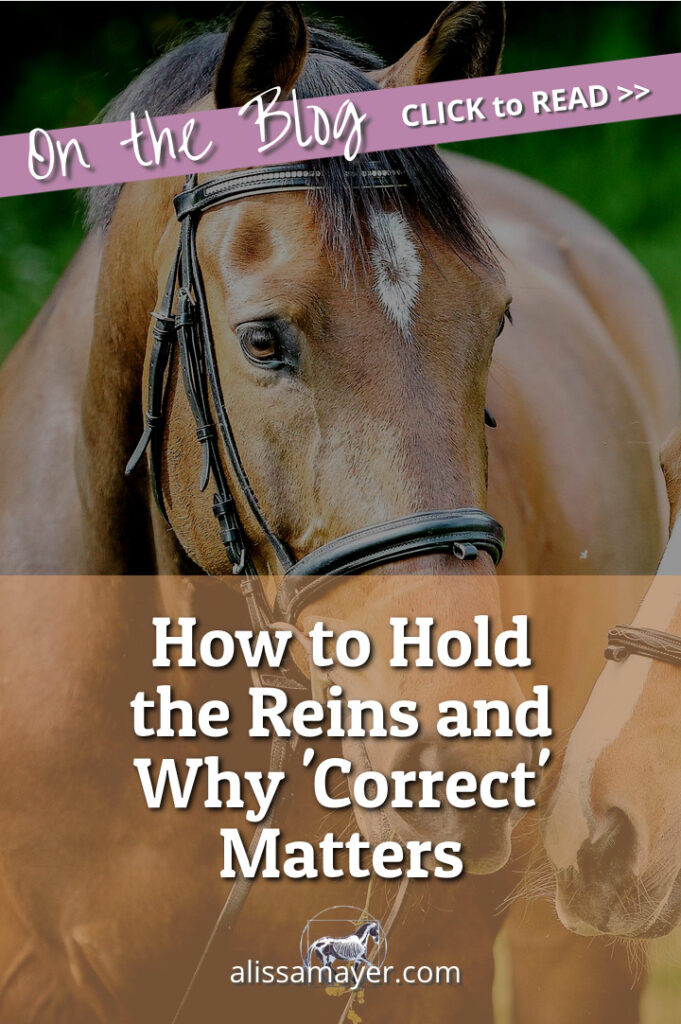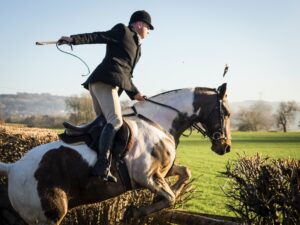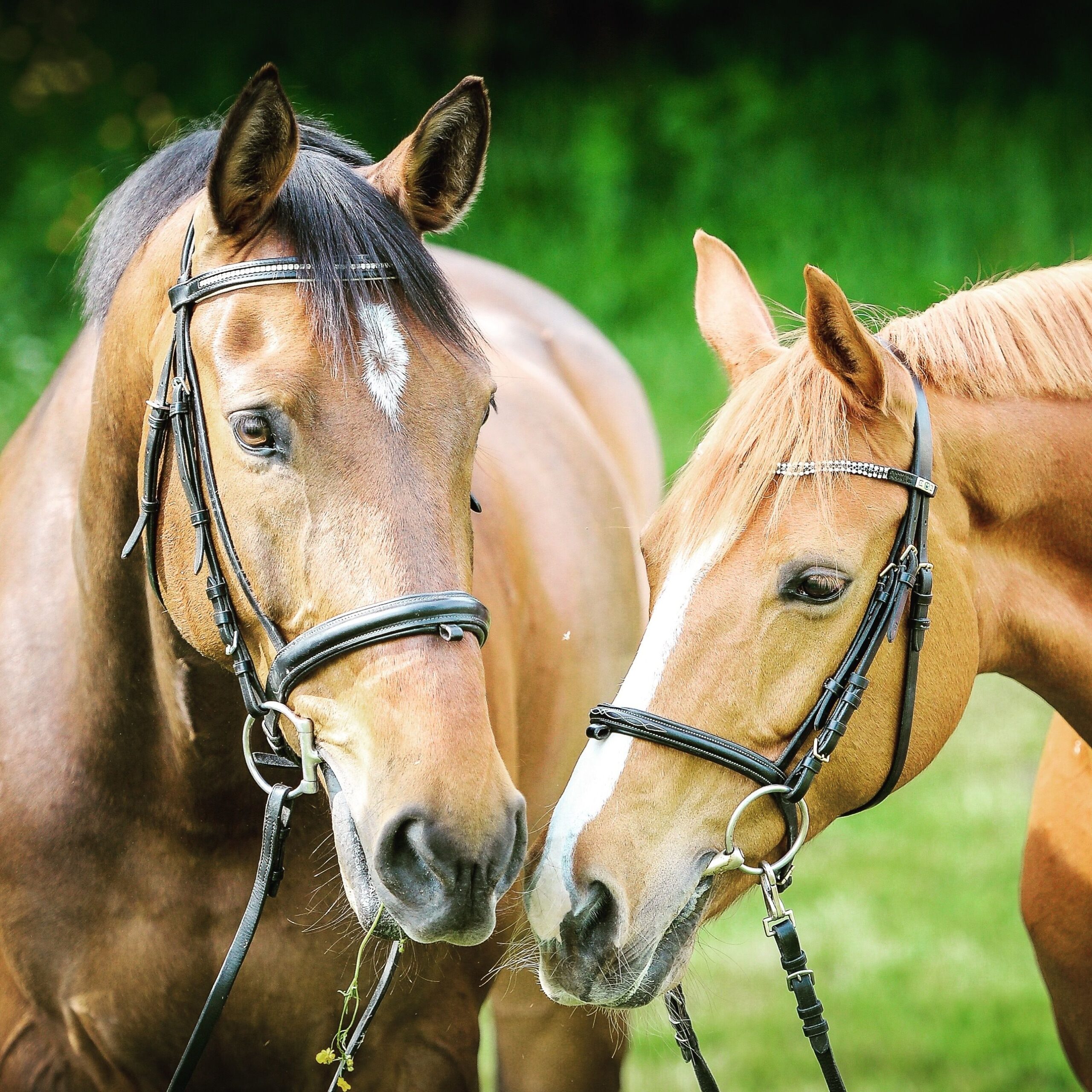Over the years, I can’t tell you how many lessons I’ve taught on how to hold the reins when riding a horse. What I share below will apply whether you ride English or Western, ride with a double bridle, or bit-less. These tips will also help you whether you use rope reins or split reins, ride one-handed or two-handed! I’m also going to discuss the Why of each of my recommendations, because I think it’s important to understand the reasons behind ‘proper’ riding!

I want to start by sharing a little bit of my training philosophy. I believe that any bridle, and therefore the reins, should be used for 2-way communication and for refinement of the aids, not for control, stopping or backing a horse.
My goal is to train all my horses and all my riders to make transitions, turns, rein-backs and halts without using the reins at all.
That way, except in emergency situations, we can reserve the reins for giving very subtle aids or for asking for engagement or flexion. Reins can give us the ‘frosting’ that can take the basics of good riding to the next level of athleticism and expression.
So How Should You Hold the Reins?
Hold the reins with a softly closed fist, thumb on top. The extra rein, or buckle-end, should come out the top (thumb side) of your fist. The rein connected to the horse should come out of the pinky-side of your fist. Press the rein between your thumb and the middle knuckle of your index finger.
If you carry a whip, the whip should be held under the rein, so your thumb is holding the rein, then the whip handle, and then your index finger. To be proper (and this is both for comfort and so you can make micro-adjustments to the ‘feel’ you are putting on the rein) most single reins should exit your fist between your ring finger and your pinky.
When riding with two sets of reins, hold one rein on either side of your 4th finger
If you are using thick rope reins you don’t have to put it between any of your fingers if it’s uncomfortable to do so.
You have probably heard that you should keep a “straight line between the elbow and the horse’s mouth.” And of course, you should keep your hands, arms and shoulders as relaxed as possible all the while. I know, it’s easier said than done!
Why You Should Hold the Reins with Closed Hands
There are many reasons instructors teach that you should ride with closed hands – I’ll share the 3 that I believe are the most important.
1. The most important reason to keep your fists closed on the reins is safety!
Open fingers are vulnerable to injury if the horse stumbles, jumps or tosses the neck up suddenly. A closed fist will just bang against the saddle or withers. An open finger or thumb can get ‘jammed’ or even broken. So, yes, a closed fist is prettier than ‘piano hands’ but it’s also waaaay safer (speaking from personal experience, ouch!)
2. A ‘soft’ or open hand is actually the opposite of a ‘quiet hand.’
The second reason to keep your hands closed on the reins is for the quality of feel and connection between the hand and the horses mouth. A loose hand, fingers that move too much, or a wrist that bends creates much more movement of the rein and bit than most riders are aware.
This extra movement can be simply annoying for a horse, or it can cause a lot of ‘background noise’ in the mouth. This noise makes it difficult for the horse to know when you are giving an aid with intention, or when the bit or noseband are just jiggling around.
3. You will lose points in competition
If you compete in any discipline (especially the English sporting world) you will lose points or get marks against you if your hands are open or if your wrists are not straight. These old ‘riding rules’ come from the practical and safety issues I mention above. That’s why they are now embedded in how horse riding is taught and how horse sport is judged.
Why You Should Keep Your Thumb on Top
Holding the rein between your thumb and the middle knuckle of your index finger gives you maximum steadiness and control. Your thumb and index fingers have been designed by millions of years of evolution to have precise motor control and to give you maximum sensory feedback.
The thumbs-on-top orientation is also the best position to allow the muscles of your forearms to be as relaxed as possible. This helps us to have the least tension in our hands, which makes it easier to maintain a soft feel and keep steady hands.
This rein holding position also allows you to carry a whip in a way that makes it easy to use the tool without moving the rein too much. You can use the whip without losing your steady connection to the horses mouth.
Why should the rein exit your fist between your 3rd and 4th fingers?
It’s simple. To enhance your ability to send and receive information through the rein. Your fingers have much more ‘feel’ and mobility than your palm. Holding the reins with your fingers, rather than just letting them pass by the meaty part of your palm, gives you much more control and sensory feedback. That feedback is your awareness of what is happening with the rein. With this enhanced feel and greater feedback, you can then be more precise and well-timed with your aids.
I also recommend riding with thin gloves to protect your hands without compromising your feel. I suggest you do NOT use webbed reins or reins with ‘keepers’ as these can make your hands harder on the rein. Keepers can cause you to “lock up” your hand position. This prevents you from smoothly adjusting your rein length when necessary.
Why keep a straight line from the Elbow to the Bit or Headstall?
It’s about biomechanics – of the human. For most riders, keeping a straight line from the elbow to the horses mouth helps us use the least amount of muscular effort. It also maintains a quiet and clear line of communication from rider to horse, and from horse to rider.
To do this, we must keep our elbows bent and elastic, and our wrists straight. The muscles that control your fingers and hands run all the way up your forearm and attach at or near the elbow. And the elbow mobility is influenced by the muscles of the upper arm and the freedom or limitations of the shoulder… What makes this challenging is that riders are generally not very relaxed, and most of us have some funny habits that cause us to hold our wrists or hands in odd positions. We either “break at the wrist” which just means bend at the wrist, or we rotate the hands either up or down, instead of keeping them thumbs-on-top and fingers softly closed.
Truth time – we all have ‘bad’ riding Habits…
Habits like these are so hard to ‘break’ because they are embedded in the unconscious part of your brain! All the advice offered in this article is great for learning how you should hold your hands on the reins, but knowing that won’t help the root problem: as soon as you shift your focus, your hands go right back to their old habits, right?
There is a solution. It’s a method of neuromuscular re-education that can re-write the habit itself, and re-set your hand and arm muscles back to neutral. It’s called Hanna Somatics, and it really works!
Click here for a free introduction to Hanna Somatics for equestrians. Day seven is all about the hands. I recommend that all my students use these exercises as a riding warm-up. It serves to prepare their bodies to be calm, relaxed and athletic in the saddle.
I’ve gotta be honest…
Having your riding instructor tell you over and over to correct your hand position and pull your shoulders back isn’t a very effective method for breaking old habits. Plus, we riding instructors don’t actually LIKE having to say the same things over and over! So when we find something that works to help our students make positive and progressive changes, we get really excited!
I have also noticed that many equestrians (myself included) can have stiffness or arthritis in our hands and shoulders. This makes holding and using the reins even more difficult – and doing Somatics can help with this too!
How to Hold Split-Reins or Ride with One Hand
If you find yourself riding with split-reins or needing to hold the reins with one hand, either for a dressage test, to open or close a gate, or so you can ride into battle with your sword-hand free – use a bridge. A bridge is a simple method of holding both looped or split reins in one hand. This allows you to still have contact and enough control to use each rein independently. A bridge is meant to be used with short reins.

To make a bridge, imagine you have split reins (one on each side of the bridle and not attached at “the buckle”). Lay the right rein across the horses withers so the free end dangles down to the horses left shoulder. Lay the left rein the same, but with the free end dangling down the right shoulder. This should give you an “X” where the reins cross at the withers. Pick up both reins as one, holding them right where they cross. The active rein (the end connected to the horse) should exit between your ring and pinky fingers on each hand. The loose end of the reins dangles free.
To ride with one hand, use one hand palm-down to grab the middle of the X and close your fist softly. Keep your fist over the withers in this position, with your knuckles up and your palm facing down. Now your right rein comes out of the right side of your fist, and your left rein comes out of the left side.
By moving your fist slightly right, left, up or down, you can follow the movement of the horses head. Moving your hand slightly back or forward can increase or decrease your contact. By tipping your fist left or right, you can activate more feel on one rein or the other. You can make a bridge with looped reins too. Make the X and let the excess rein form a loop that points toward your core or up over your fist.
I hope this is helpful!


